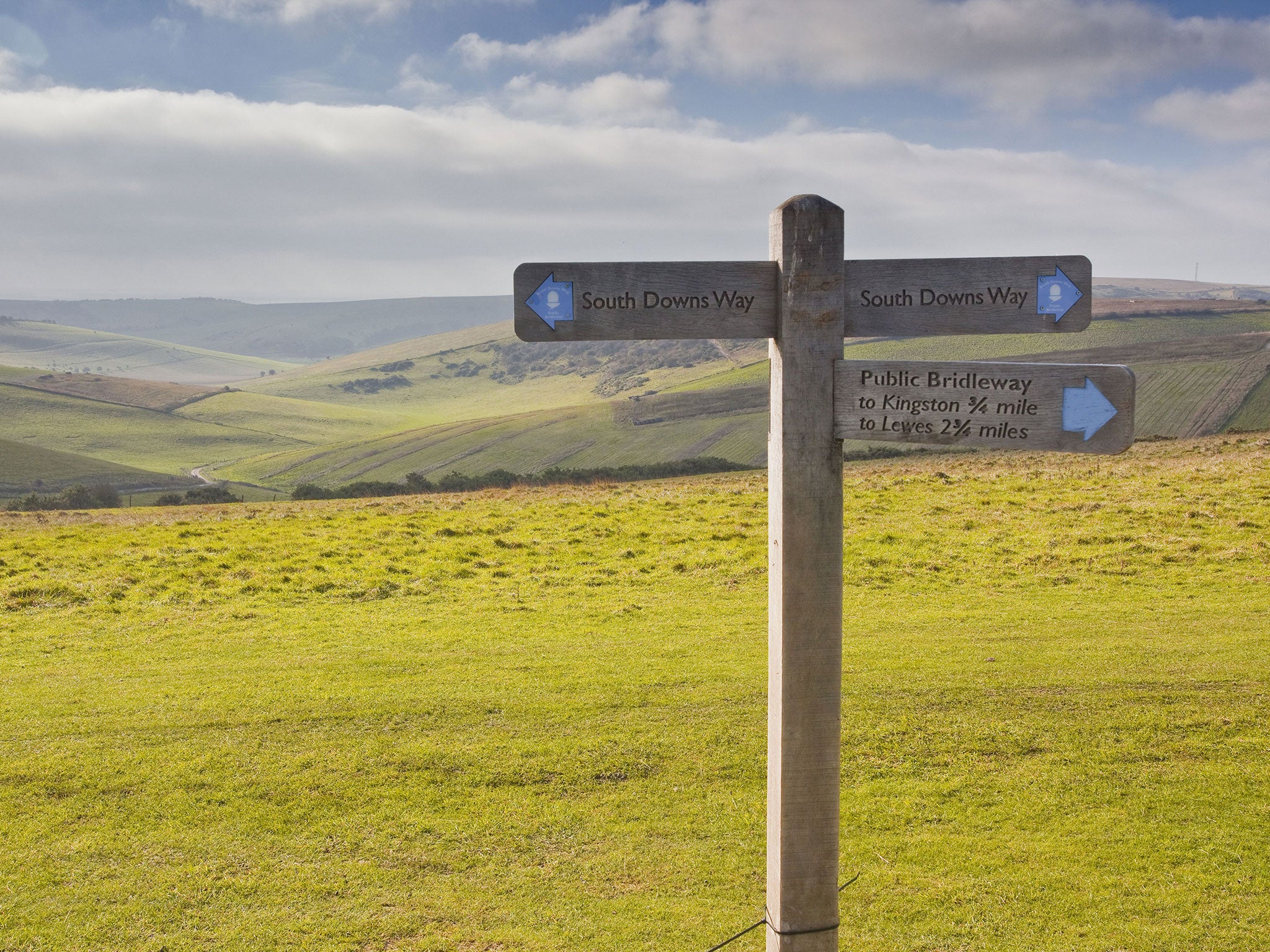Road expansion planned for South Downs National Park ‘ignoring local views’
Meanwhile another southern coastal route identified as most persistently dangerous highway in Britain

Residents of the South Downs National Park have accused the Government of attempting to drive through road development proposals in sensitive areas along the South Coast without properly consulting the public.
Proposals to expand the capacity of the A27, most notably around the West Sussex market town of Arundel to reduce congestion, are progressing rapidly – but with negligible input from the general public because they haven’t been allowed to participate directly in the process so far, locals told The Independent.
Although no final decisions have been made, residents are angry because they believe the Government is deliberately excluding them from the initial consultation phases to make it easier to quickly steer the process to the desired outcome.
“The Government got criticised a couple of years ago for not doing enough on infrastructure. They are looking for good news stories for the Autumn Statement [on 3 December] so they can say, ‘Aren’t we great, we’re helping the economy by reducing road congestion, helping the poor motorists and creating jobs’,” said Chris Todd, of the Campaign for Better Transport. “They’ve been dropping options prematurely, so any consultation will come too late. It won’t be a genuine consultation if the options are already off the table.”
The Department of Transport has held three meetings this year with local “stakeholders” such as NGOs and local councillors to discuss the options being considered, but not the general public.
The options still under consideration along the Arundel stretch of the A27 include developments that dissect the Doomsday Book village of Binsted and threaten a large expanse of South Downs ancient woodland.
Opponents to the process say past feasibility studies have concluded it is neither environmentally or economically desirable to develop the roads and could increase traffic.
“I thought I was one of the only people concerned, but when I spoke to other people about it I discovered that many of them didn’t even know about it,” said Kay Wagland, who lives near Arundel.
Most of the A27 is dual carriageway, but some stretches are single lane and infamous for being bottlenecks. As a result, the proposed reforms along the A27 enjoy strong support in some quarters.
A Department for Transport spokesperson insisted that local people would be asked their concerns about the developments. “We have been working with communities along the [A27] route throughout this process and will consult them fully once we have developed our proposals. We will announce the outcome of that work in the Autumn Statement.”
Dangerous roads: A285 stretch the worst
A 12-mile stretch of a southern England coastal route is the most persistently dangerous highway in Britain, according to a new report.
The stretch is on the A285 between Chichester and Petworth in West Sussex, where fatal and serious crashes have increased by 16 per cent from 2007 to 2012.
It topped a list of roads which have shown little or no change in accident levels or have had significant increases in the number of crashes.
The list is announced today by the Road Safety Foundation in a report entitled How Safe Are You On Britain’s Roads? The report shows the risk of death and serious injury on motorways and A roads is lowest in the West Midlands and highest in the East Midlands.
Subscribe to Independent Premium to bookmark this article
Want to bookmark your favourite articles and stories to read or reference later? Start your Independent Premium subscription today.

Join our commenting forum
Join thought-provoking conversations, follow other Independent readers and see their replies